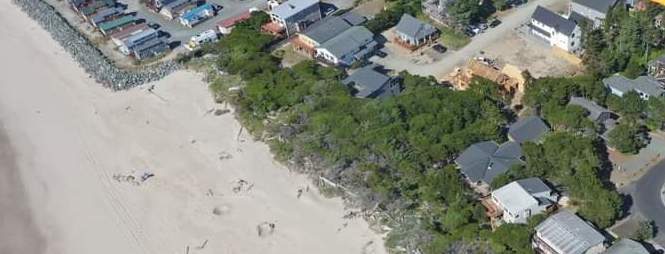
One year ago, as part of an ongoing campaign, the Surfrider Foundation’s Three Capes Chapter challenged Tillamook County’s approval of beachfront property owners’ request to install an 880-foot rip rap revetment on an active foredune. The approval granted an exception to Oregon’s Land Use Planning Goal 18- a statewide law aimed at protecting Oregon’s beaches and dunes. Surfrider, along with the Oregon Shores Conservation Coalition, Oregon Coast Alliance and the Department of Land Conservation and Development, appealed the Goal 18 exception to the Oregon Land Use Board of Appeals (LUBA). Surfrider contributed to the appeal by representing recreational users’ interests, and by raising arguments relating to the project's detrimental impacts to beach access and coastal ecosystems and interference with public trust uses including recreation.
On September 30, 2022, LUBA issued a mixed decision, finding that there was not sufficient evidence to justify an exception for the vacant lots but also finding that the developed lots were eligible for a “catch-all” exception under Goal 18 due to the “unique circumstances” created by the existence of two navigational jetties and impacts from El Niño/La Niña events. This was a disappointing ruling, as both navigational jetties and El Niño/La Niña events are far from “unique” along the Oregon coast. LUBA remanded the case back to the County to address the issue of the vacant lots. Surfrider and Oregon Shores, in consultation with our pro-bono counsel Crag Law Center, have decided not to appeal the LUBA decision to the Oregon Court of Appeals. However, Surfrider plans to participate in the remand proceedings for this case as soon as they are initiated. In addition, Surfrider recently sent a letter to Tillamook County demanding that they order removal of the unpermitted riprap the property owners installed while the LUBA appeal was pending, as well as restoration of the natural foredune the property owners destroyed - more on that here.
Surfrider is concerned that Oregon’s prohibition against shoreline armoring in areas developed after 1977, as clearly stated in Goal 18, is being undermined by private property owners determined to fortify their investments. This case illustrates the difficulty of preventing shoreline armoring given local government’s favor toward local property owners over public beach goers and the reality that a property owner is often the only party able to submit expert evidence into the record. This is just one in a number and range of cases where the public has lost out on an issue based on weighing competing evidence in favor of a property developer, leading to the taking of public land to benefit private property.
This case also exemplifies the short-sightedness of destroying natural barriers such as a healthy foredune with established vegetation- a practice that only exacerbates erosion in the face of climate change and rising sea levels, putting coastal infrastructure at risk and destroying critical ecosystem functions. As our sea levels rise, protecting, restoring, and adaptively managing our beaches and dunes will be critical in order to maintain their services.
Surfrider Foundation’s beach preservation policy recognizes that beaches are a public resource and should be held in the public trust. Due to their impacts on coastal and ocean ecosystems and coastal access, sea walls and similar stabilization devices are not consistent with our mission for protection, conservation of and access to coastal resources. The Surfrider Foundation will continue to advocate for appropriate long-term solutions that maximize public benefit.
Visit the Three Capes Chapter website to support them in this work or sign up to volunteer.
